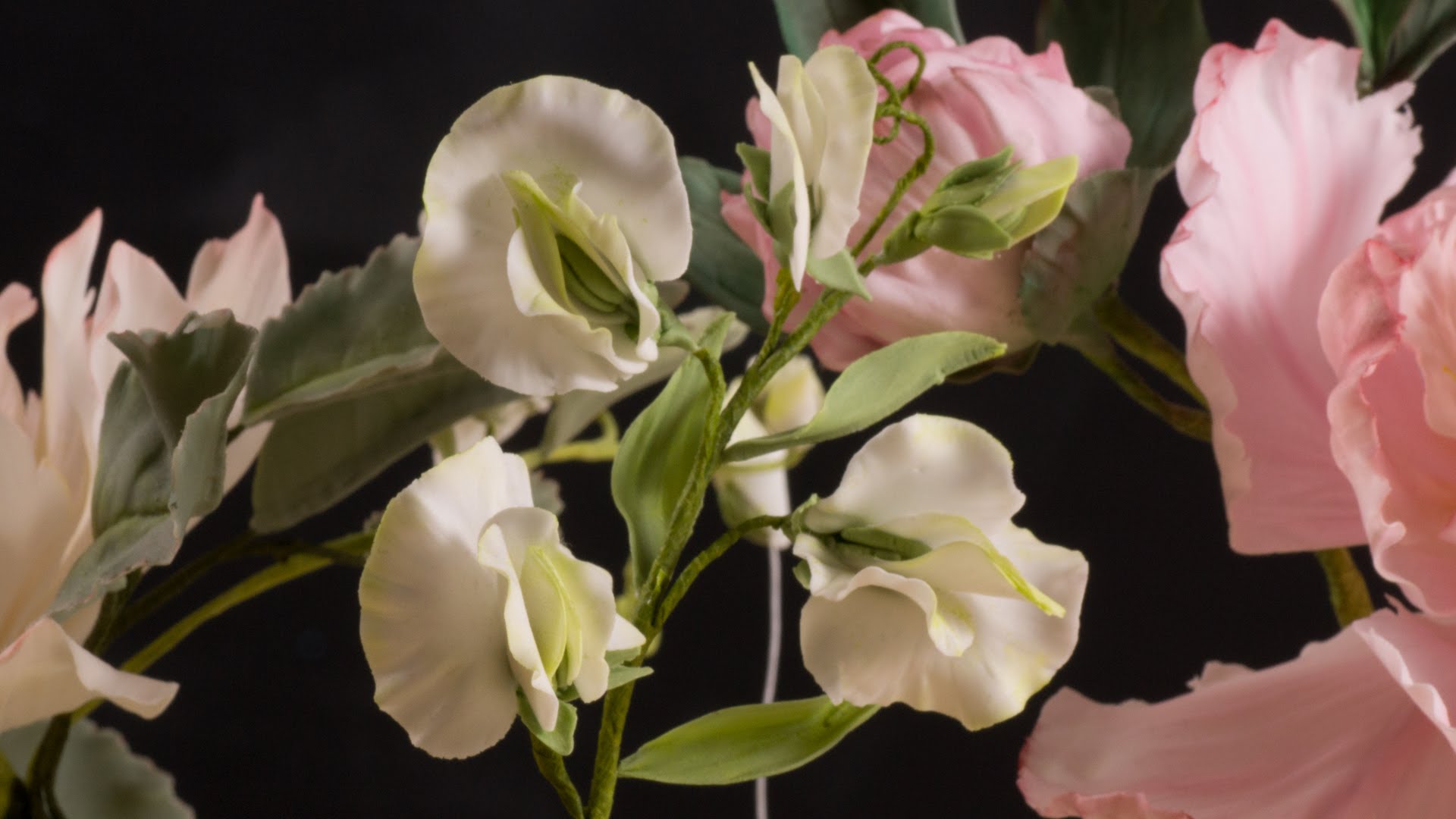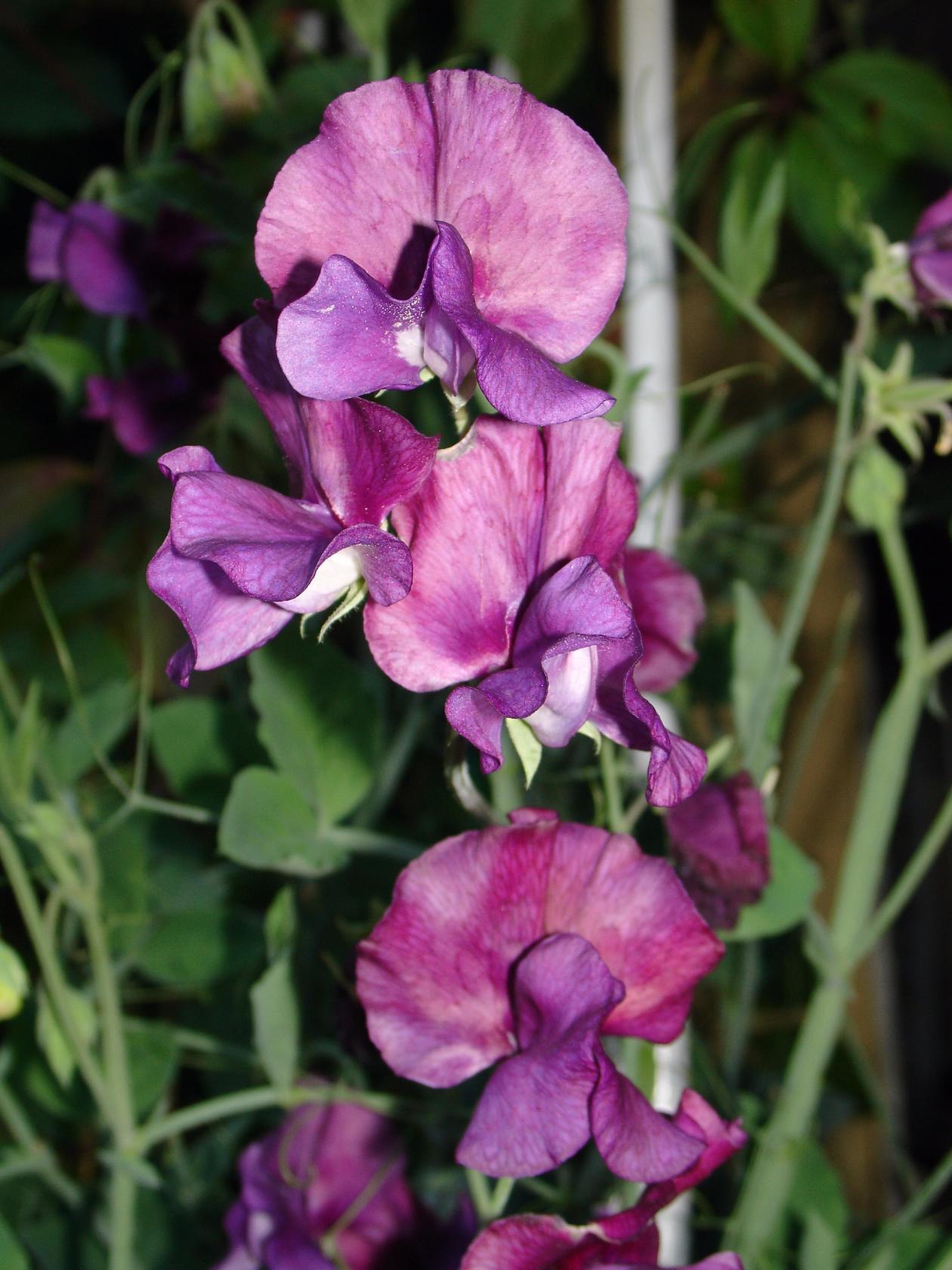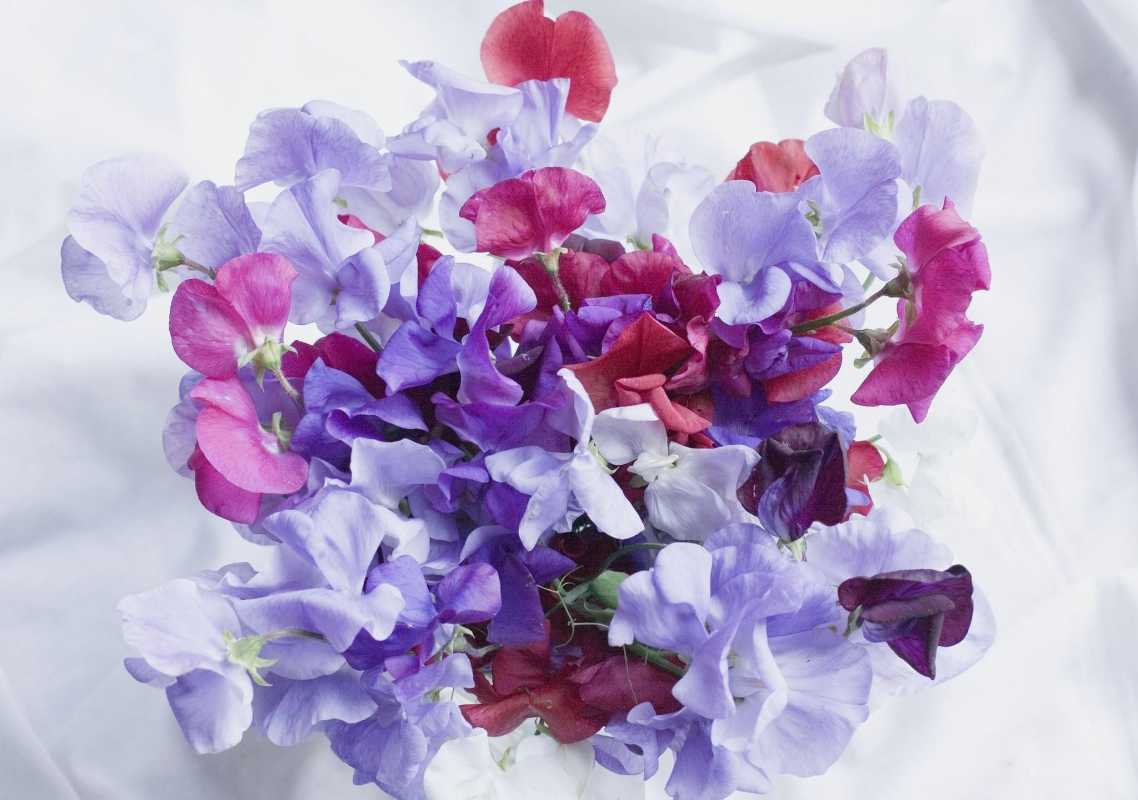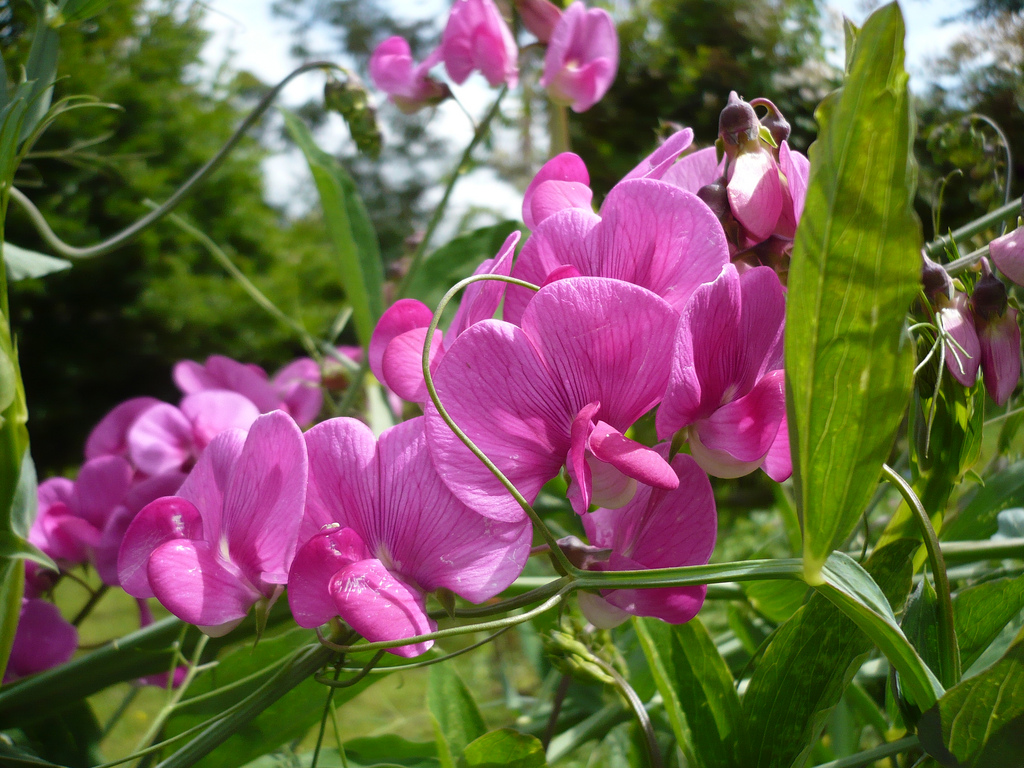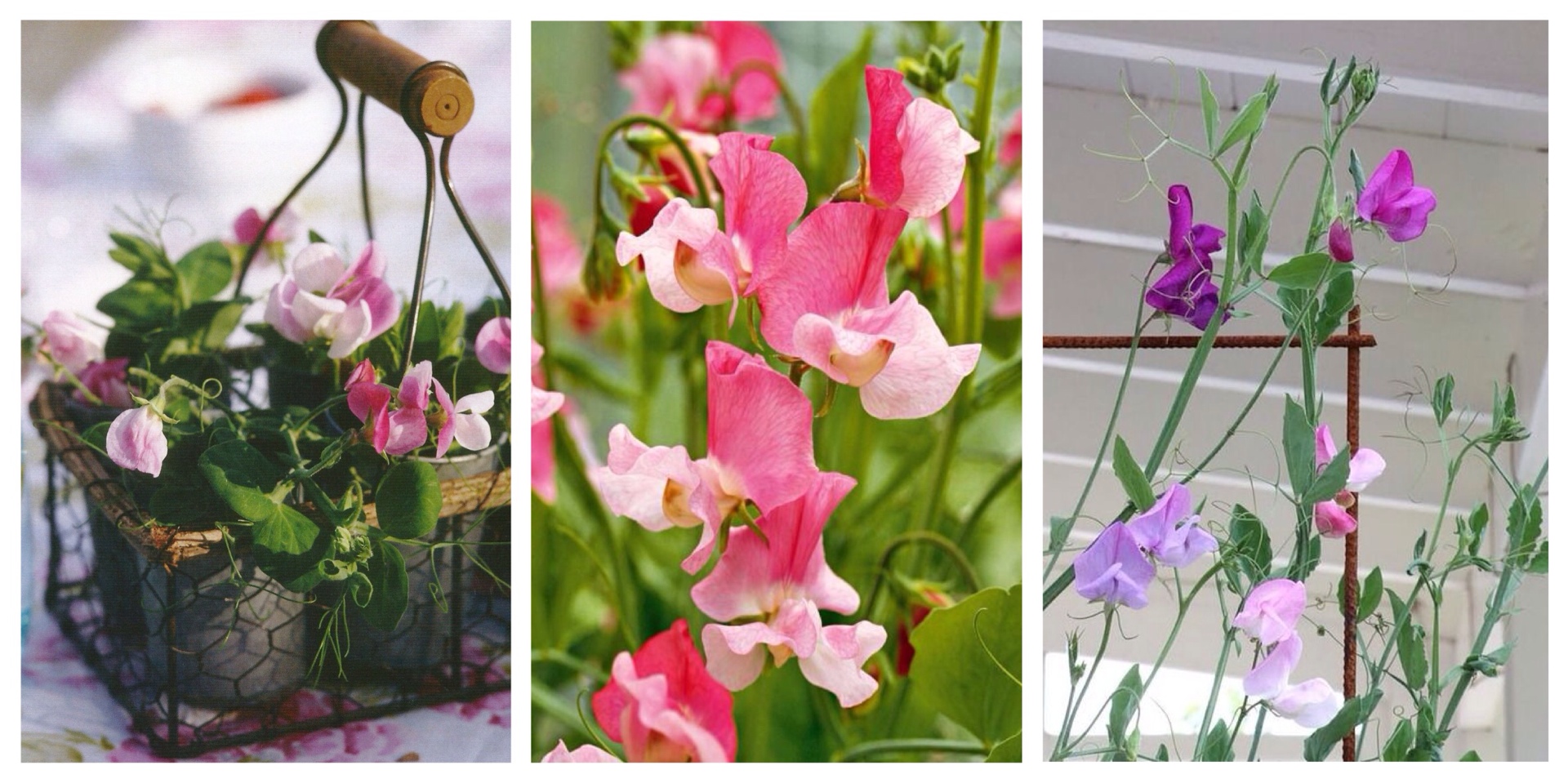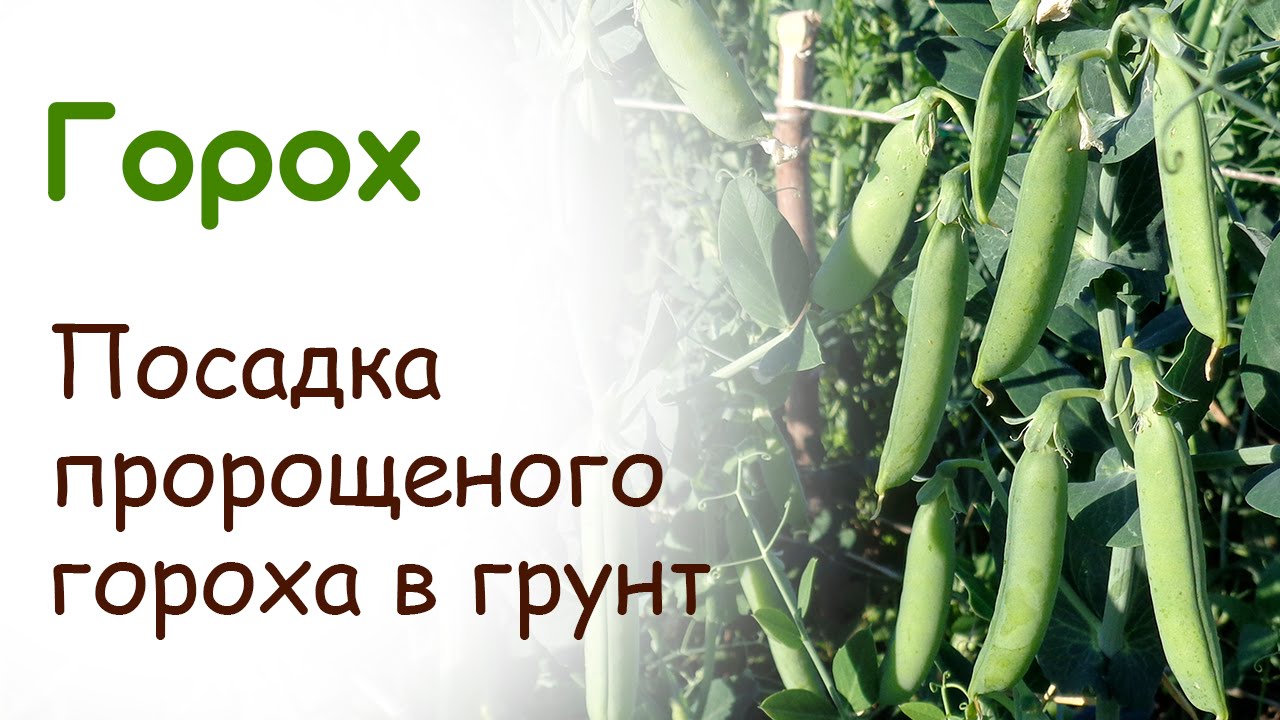Content:
Allspice peas (Lathyrus odoratus) belongs to the Chin genus, the Legumes family. The homeland of the plant is the eastern part of the Mediterranean. But there is an opinion that the flower capable of curling and fragrant was brought from Peru and Ecuador.
The history of the cultivation of the bean flower is known, according to which a certain Sicilian monk F. Kupani, impressed by the charm of a fragrant loach, in 1699 sent the seeds of this plant to his English teacher on a foggy island. Later, in 1800, the first 5 varieties of sweet peas were bred, which by that time had gained popularity among British gardeners.
Description of the plant
Sweet peas are a flowering perennial that is grown as an annual plant in mid-latitude conditions. The decorativeness of lianas and pea flowers is often used to decorate a balcony, terrace or gazebo using vertical landscaping.
Climbing weakly branched shoots are able to climb vertical supports, clinging to them with modified antennae leaves. A pea flower resembles a butterfly folded its wings or a small sailboat of various colors. Lush bloom begins in July when planted in open ground, in early June when planted in seedlings and continues right up to the frost.
The fruit of the plant is a bivalve pod with up to 8 seeds inside. A sweet pea seed has the shape of a ball, squeezed from the sides and painted yellow, light green or almost black. Pea does not lose its germination for 6, and sometimes even 8 years.
The root system of the plant is remarkable, which has a rod-like, highly branched form. The root shank is capable of going down to one and a half meters. Entering into symbiosis with nodule bacteria, the plant easily assimilates nitrogen from the air, simultaneously enriching the soil with it.
Varieties
Perennial ornamental peas have flowers colored pink or purple, while its annual variety is represented by a wide range of colors and a more fragrant aroma.
Currently, more than 1000 varieties of sweet peas are known, which are combined into 16 groups, different in vine length, color, flower shape and size.
Tall. They include several varietal groups. On the shelves of flower shops, you can also find tall perennial peas that do not live in cold climates for more than 3 years. This includes groups of varieties such as:
- Spencer. It grows to a height of 2.5 m and is a polystalk with peduncles up to 20 cm in length. The flowers are graceful, 3-4 pieces per brush and with a wavy edge of the upper sail-petal. The group includes varieties:
- An aristocrat with a sweet persistent scent and white-pink flowers.
- Sir Charles with scarlet flowers.
- Sir Arthur is pale lilac.
- The formula for love has a wide palette.
- Royal. Early ripening group with large inflorescences and variably colored. All varieties of the group are heat-resistant and able to stand for a long time after cutting.
- Galaxy. They grow up to 2 m, have large (up to 8 flowers in each) inflorescences with corrugated flowers. Popular varieties here: Alice, Neptune, Milky Way, Cremona.
- Winter elegance. The peculiarity of the group is the possibility of flowering on condition of a short sunny day.
Medium-sized varieties. They grow up to 90 cm in length. Bloom profusely.Terry inflorescences of plants of large size and various colors. These include varieties: Lummer, Explorer, Suppersnoop, Continenta, Jet Set.
Border varieties of Russian selection are interesting: Luciena with pale pink flowers, Vera - pink-scarlet, Geniana - white-lilac, Elizaveta - orange, Galina - purple inflorescences.
Stunted. Small and frizzy varieties up to 45 cm in length. No support is required during landing. Perfect for arranging bouquets and for planting in mixborders. This includes varietal groups:
- Mammut. Grows up to 30 cm, flower stalks of bright diverse colors.
- PinkCupid. It grows up to 30 cm. The brush has 2 or 3 medium-sized flowers of salmon, lilac, white or blue color.
- Fantasy. The smallest varieties. They grow up to 20 cm. The varieties of the group are often called dwarf peas. They look like multi-colored clouds in the landing. The group includes the Argyrin variety with pink inflorescences.
Fantasy
Perennial varieties:
- Pink pearl... The flowers are large, surprisingly bright pink. The cultivation and care of perennial pink pearls consists in hilling the root system for winter, raising the soil by 20 cm.In this case, the ground part of the plant is either cut off, or, after removing it from the support, is laid on the ground, using it as additional mulch, but in the spring it is still cut off. In the second year, the variety grows very quickly to 2 meters in height.
- White pearls... Broad-leaved sweet pea blooming from June to October. It grows up to 2 m, has large white flowers. Prefers only sunny areas.
- Pearl mix. The palette of inflorescences is pink, red, white. Wintering with hilling. Seeds are sown in open ground in June, soaking before sowing. Bloom from July to September.
Conditions for landing
In order to grow sweet peas, you need to choose the right planting site. The area for plants should be exposed to the sun, but sheltered from the wind. The soil for planting is chosen with a neutral PH reaction and good drainage. It is enriched with organic fertilizers.
In the autumn, lime, potash, phosphorus fertilizers are added to the flowerbed and dug to a depth of about 50 cm. And in the spring, before planting by seed or seedlings, the soil is again treated with a hoe.
Care and cultivation of annual sweet peas
With the seedling method of growing, the seeds are sown at the beginning of March, they are previously soaked in warm water for 10 hours. Then they are kept in sawdust for 4 days to hatch. The hatched grain is planted in a container, preferably a peat one 2 cm deep into the seedling mixture, kept at a temperature of 20 ° C.
After the seedlings have germinated, the containers are transferred to a cool place (14 ° C) and kept, periodically watered, until they are planted in the ground. You can feed the seedlings with mullein infusion in a ratio of 1 to 10. It is useful to pinch the stem after the appearance of 3 leaves so that the plant bush.
You can plant pea seedlings in open ground in the first half of May, it easily tolerates small frosts. When transplanting, special care is taken with the root system, which hardly survives damage. It should be planted at a distance of about 20 cm, well watered before and after planting.
When grown from seeds, allspice peas are planted immediately in the ground, but then flowering will begin a month later. While young peas are growing, they are often loosened and weeded. You can use a film greenhouse, as the seedlings are very tender. Moisturize rarely, but thoroughly. As soon as the young growth begins to grow, supports should be placed. In order for sweet peas to bloom for a long period, the withered inflorescences must be cut off, not allowing the beans to tie.
Sweet peas for the entire growing season must be fed at least twice: a couple of weeks after planting and regrowth of the stems with a mullein with potassium-phosphorus fertilizers and before flowering - nitrogen (4), phosphorus (9), potassium (12) fertilizers weighing 25g. Superphosphate, potassium sulfate, ammonium nitrate are suitable for feeding.
Care and cultivation of perennial crops
Perennial peas in the Russian climate can live for three to four years. At the same time, it must be grown exactly under the same conditions as annual varieties.
With the help of sweet peas, you can decorate arches and flower screens, hide unsightly buildings and fences. Low-growing varieties can be a great idea for flower beds and border decoration, and cutting flower stalks will make wonderful bouquets. The cheerful colors of sweet peas and its special aroma, with proper care, can delight the gardener throughout the warm season. And for this all, what is needed is to stock up on the necessary knowledge about the conditions for growing a wonderful fragrant plant and make a minimum of effort to implement them.
